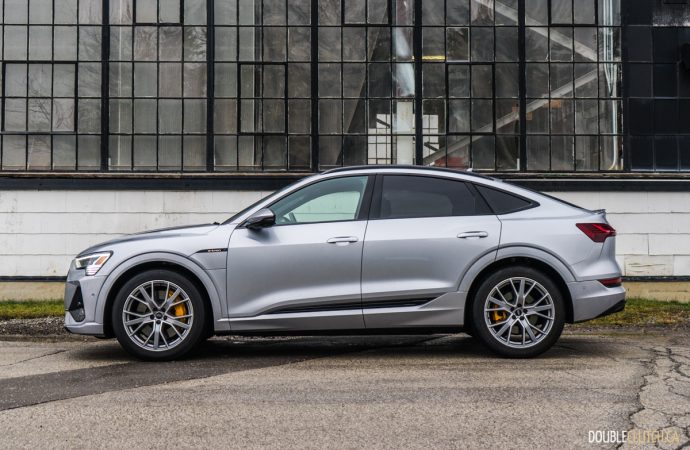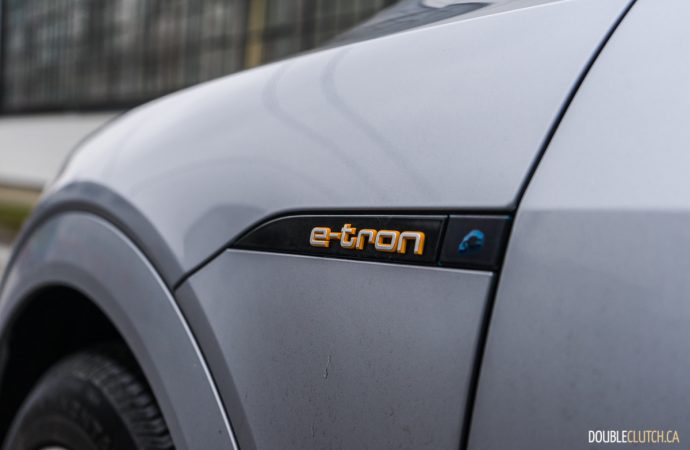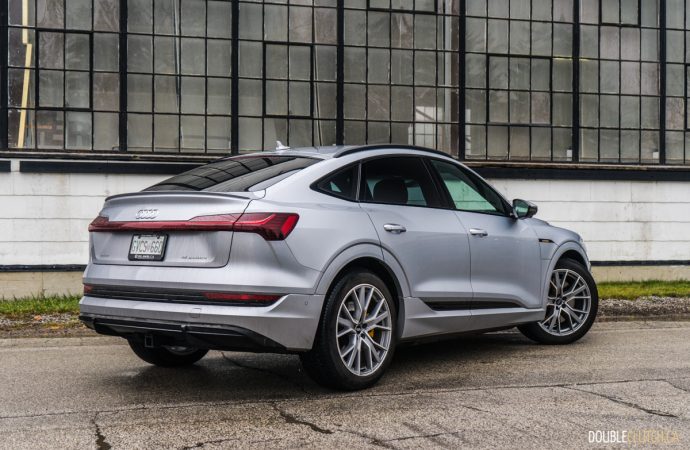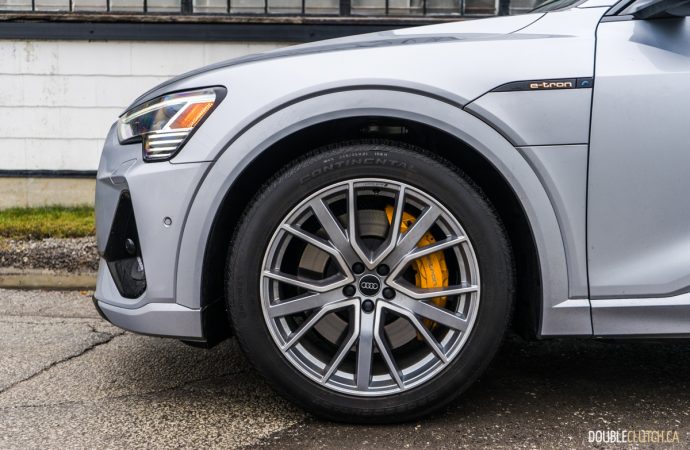Electrified cars are becoming increasingly more mainstream, with giants like Tesla leading the way for usable driving range and price point. While Tesla has a long way to go with regards to build quality, sales are speaking for themselves. The other premium automakers are having to play catch up in a relatively quick fashion, and examples like Mercedes-Benz’s EQC and the Jaguar I-PACE are a step in the right direction. We spent a few days with the 2021 Audi e-tron Sportback quattro, a new crossover coupé on the market, and also Audi’s second all-electric entry in the Canadian market.
Audi has recently launched their regular e-tron, which happens to be a well-designed, well-proportioned full electric car. Not wanting to be late to the game, the brand has decided to capitalize on this new trend of crossover coupés that buyers are flocking to. Personally, I don’t quite understand – it’s less practicality for more money, and frankly they don’t necessarily look better either. But regardless, the e-tron Sportback tested here looks like a crossover version of the A5 Sportback, which isn’t a bad thing.
Powering the e-tron are two induction AC motors, with a combined output of 402 horsepower and 414 lb-ft. of torque. Engage the “Boost” mode and torque spikes to 494 lb-ft., which makes for a maximum acceleration time of 5.7 seconds to 100km/h. For a 5,500-pound crossover, that’s not bad at all. And as with all electric vehicles, the immediate torque available right off idle helps the Sportback feel significantly faster.
On-road manners are top tier, which is exactly what we have come to expect from the current lineup of Audis. The low center of gravity means the e-tron Sportback feels very balanced, and handling is quite neutral with minimal body roll. It’s a true joy to dart around in the city with, and the quick response exemplifies the vehicle’s immediacy.
The most important factor with every electric vehicle is battery capability and overall driving range. The e-tron Sportback packs a 95-kilowatt hour battery that can deliver a peak 300 kilowatts. As such, it’s rated for a maximum of 351 kilometers. In winter conditions, the battery showed a maximum range of 290 kilometers. One impressive trait is that the vehicle consistently delivered more range than displayed, with regeneration preserving a significant amount of energy.
The e-tron Sportback’s cabin is a marvelous affair, with the perfect blend of usable high-tech and minimalism. It uses nice materials and has physical buttons for many functions, and the large futuristic shifter assembly is a nice touch. Infotainment is controlled via two massive touchscreens, with some of the most engaging and realistic haptic feedback we have ever encountered. It’s pretty easy to use once you’re used to it, but there is definitely a steep learning curve.
Interior space is more than reasonable, with the only compromise here being rear headroom thanks to the Sportback’s swooped roofline. The seats are comfortable, and we observed that the heated seats are particularly toasty, something that’s much appreciated in the heart of a Canadian winter. A heated steering wheel is optional, something that’s a bit curious for a vehicle at the $100,000 price point, but Audi isn’t the only brand doing this. Visibility is also good, and one of the most noteworthy traits is the vault-like quietness inside the cabin at highway speeds. The e-tron Sportback is whisper quiet as it goes about its business.
While the regular e-tron starts at $85,600, the Sportback tested here starts at $88,850 in base Progressiv trim. The Technik tested here starts at $96,500 and adds $2,800 for the Adaptive Cruise Assist Package, bringing the total to $99,300. With its 1,543-liter cargo capacity with the seats folded, the Sportback gives up nearly 200-liters versus the regular e-tron. Unless you’re hell-bent on the styling aspect of the Sportback, we’d recommend going with the regular model.
Rivals for the e-tron Sportback are significant, including the Tesla Model Y, Volvo XC40 Recharge, and now the Ford Mustang Mach-E. The Model Y offers 525 kilometers of range at $69,990, which is significant. The XC40 Recharge is also cheaper but offers about the same range. The Tesla remains the e-tron’s biggest challenge, specifically for the sheer amount of driving range available to buyers – this is the largest weakness of most of today’s electric vehicles. While the Mustang Mach-E isn’t a luxury product, it also starts with 475 kilometers of range.
If you really like the style of the 2021 Audi e-tron Sportback quattro, but don’t really want to take the plunge into the EV world, there is now an SQ5 Sportback too, which is effectively this but with a traditional gasoline engine. As it stands, the e-tron is a decent yet expensive step into electrification. It has the ease of use and comfort that most buyers want, and enough range for the average Canadian commute.






